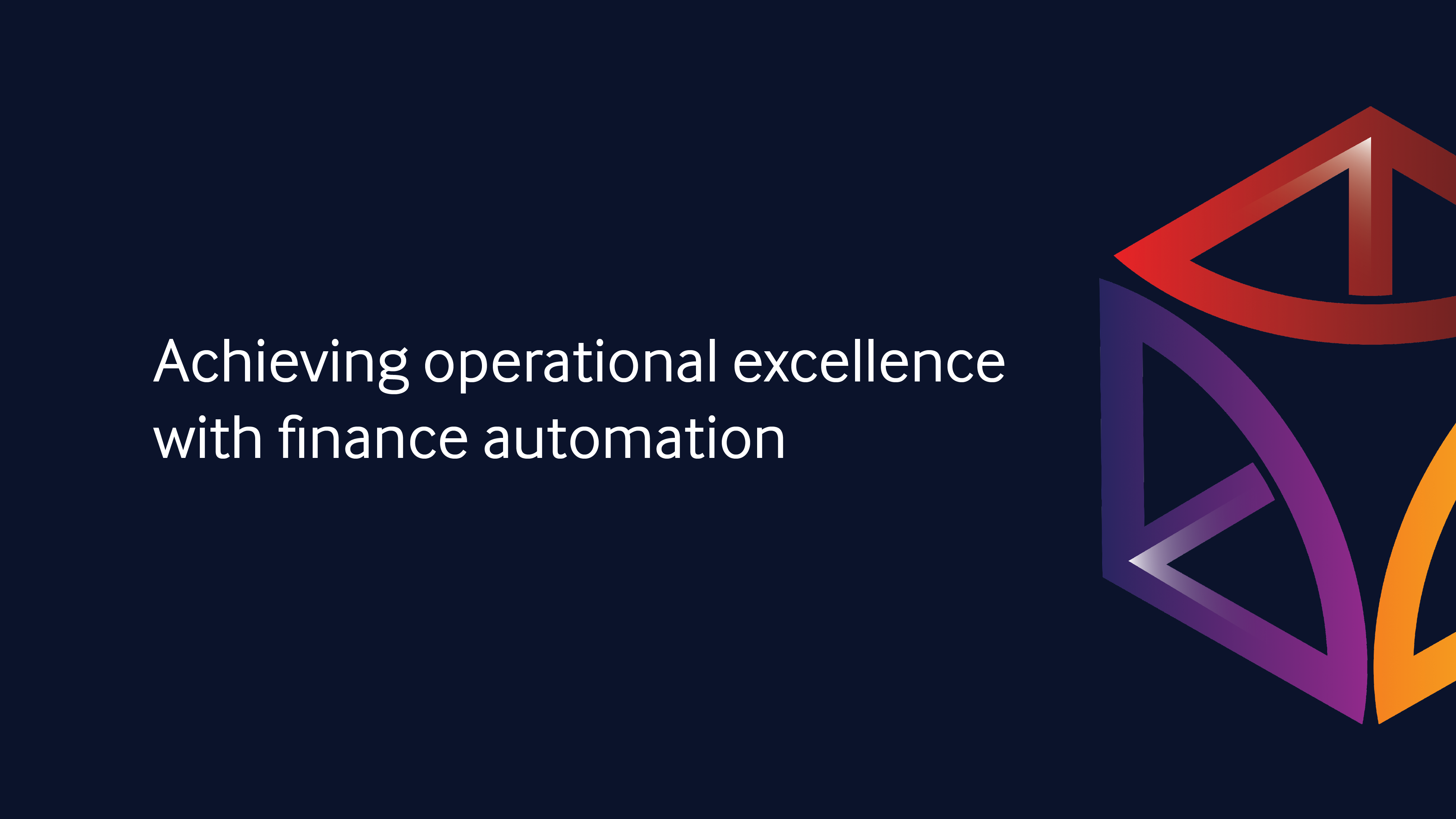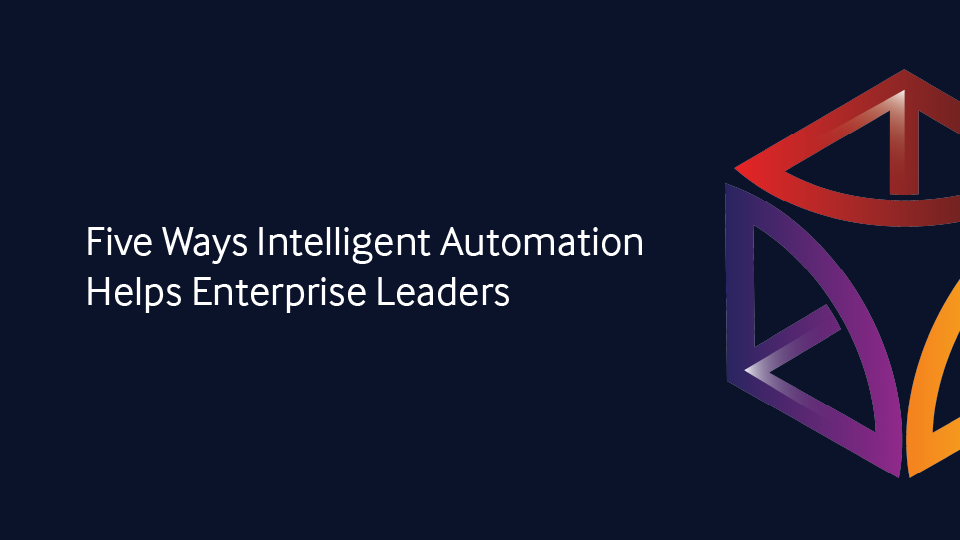7 minutes read
The future of finance is about delivering valuable insights at a speed
Finance chiefs must prioritize reducing costs, modernizing systems, and managing controls. The challenge? Rather than leveraging technology to drive transformation, finance teams have been forced to compromise on their requirements just to complete the basics of their jobs. Yes, rather than focusing most of their time on driving performance, finance teams are still burdened with managing and reconciling data or – worse – stitching together sub-par, connected finance technology.
In today's rapidly evolving business landscape, achieving operational excellence is no longer a mere aspiration but a necessity for organizations striving to stay competitive. One of the most effective ways to attain this excellence is through finance automation. Automation can streamline financial processes, reduce errors, enhance decision-making, and boost efficiency. Some of our customers have experienced the tangible benefits listed below from using our Intelligent Automation Platform.

Fast Forward - Intelligent Finance Automation
Now it's the time to break the cycle
Automation, Analytics, Adaptive, Agile, and Artificial Intelligence are the 5A’s poised to reshape the finance function.
These 5A’s have ushered in a new era for finance teams. What was once regarded as a department that dealt with crunching numbers, reporting, and compliance has been reshaped in the name of intelligent finance automation.
Intelligent Finance Automation means that finance departments play a more significant role in providing value to the organization, being the first people to share the need for changes, provide plans to achieve operational efficiency and help steer the business toward maximum success with automation, analytics, and artificial intelligence.
Put It Forward Intelligent Automation Platform can make Intelligent Finance Automation possible by providing finance teams with the tool to provide deep insights and a transparent view of your organization’s happenings.
Table of Contents
- Achieving operational excellence with finance automation
- The future of finance is about delivering valuable insights at a speed
- Fast Forward - Intelligent Finance Automation
- Evolve from traditional finance activities to Intelligent finance automation
- Areas in which finance leaders can leverage automation
- How to automate finance to begin reimagining the finance function of tomorrow
- The key benefits of Intelligent finance automation
- Key Take Away

Evolve from traditional finance activities to Intelligent finance automation
The Promise of Finance Process Automation
Finance organizations perform various activities, from collecting basic data to making complex decisions and counseling business leaders. As a result, the potential for improving performance through automation varies across subfunctions and requires a portfolio of technologies to unlock the full opportunity. According to McKinsey Global Institute’s automation research, currently demonstrated technologies can fully automate 42 percent of finance activities and mostly automate a further 19 percent.
About a third of the opportunities in finance can be captured using Intelligent Automation. Integrating the Put It Forward Intelligent Automation Platform into existing IT systems and other tools can be applied across several finance activities to automate additional tasks further.


“By McKinsey, THE WINNERS IN FINANCE WILL REIMAGINE THEIR OPERATING MODEL AND DEVELOP LONG-TERM STRATEGY FOR EXTREME AUTOMATION.”
Areas in which finance leaders can leverage automation
Order-to-Cash (O2C)
Unsurprisingly, the performance of the O2C process could be better in most companies. Siloed operations, lack of data, and inflexible legacy systems are the three fundamental problems. The platform approach can help address these pain points. Too often, organizations lose significant value in order-to-cash and inside-sales operations.
- Revenue leakage
- Business efficiency
- Customer Experience
- Productivity
- Quality and Accuracy
The first step to achieving the unlock is fully understanding the process and data to extract critical business insights and impact drivers. Using an Intelligent Automation Platform to perform process-mining techniques on ERP transaction data, organizations can uncover consistent patterns of errors and rework, revenue leakage, and customer-experience pain points. These generated insights can be leveraged across organizations to improve O2C processes dramatically. By thoroughly investigating the potential value embedded and accordingly redesigning the O2C process, organizations can significantly improve customer experience, impact top-line growth, and avoid the next round of cost-cutting measures. Results vary, but organizations should see a 1% to 3% increase in sales revenue and a 15% to 30% savings in cost owing to automated order creation and the resulting drop in the back-office effort, digital invoicing, and cash application, fewer disputes that need resolution, and fewer penalties for late or incomplete fulfillment.
Re-defining the A in FP&A to focus on analytics rather than analysis
Many FP&A organizations are stuck in a rut—consolidating data and spreadsheets, following a predictable, calendar-based rhythm of the business, and relegating themselves to the basic provision of rear-view information to predict the future. Next-level FP&A teams emphasize the “A” Analytics in FP&A—managing data more efficiently through digital tools platforms and finding and sharing insights more quickly.
Next-level FP&A teams capable of leveraging rear-view mirror analytics with predictive analytics build more speed and flexibility into their processes, which can trigger more efficient and effective operations throughout the company.
As companies increase investments in advanced analytics, CFOs, and their FP&A leaders need to be able to provide precise forecasts and actionable insights to support quick and accurate decision-making.
FP&A teams are dealing with an ever-increasing amount of business data that, in turn, requires more reconciliation and consolidation before the relevant business insights can be factored into budgets, forecasts, and business plans.
However, dispersed organizational data, outdated, non-standardized reporting processes and lack of an insights platform mean financial planning and analysis teams often fail to provide clear, decision-ready insights that businesses need to drive growth. Many FP&A teams continue to rely on legacy processes—for instance, they generate reports as spreadsheets or static presentations, making it difficult to refresh data, even as the inflow of information about the business increases exponentially.
Next-level FP&A teams must synthesize financial and nonfinancial data to create a consistent fact base to help inform critical business decisions and improve organizational performance.
Intelligent Finance Automation delivers the A to Finance Teams to Fast Forward their Growth Agenda
Intelligent Finance Automation could ingest data from servers across the company and generate and update key insights and other reports in real time using a series of algorithms. Quickly leverage pre-formatted dashboards that can be shared across the organization to share insights and take action faster.
- Intelligent Automation Platform helps FP&A teams embark on an automation journey to help democratize data through real-time, action-oriented dashboards that bring the organization together around a single source of truth.
- Emphasis on Speed and Prediction-next-level FP&A teams must build fit-for-purpose processes and reports that run frequently and with high detail.
- Rely more on data insights and less on intuition. FP&A teams need tools to connect to data lakes (or warehouses) that contain general-ledger financial data and a range of external business information, perform analytics, and generate insights to feed to leaders operating at the edge.

How to automate finance to begin reimagining the finance function of tomorrow
1. Identify and Asses Your Current Processes: Begin by evaluating your existing financial processes. Identify bottlenecks, inefficiencies, and areas where errors commonly occur. This assessment will serve as a foundation for your automation strategy.
2. Evaluate Your Existing Setup
3. Establish Base Line Metrics
4. Assign a Stakeholder and Project Team
5. Determine Data Integration
6. Select the Right Tools, Set up Workflows, Test the Workflows, and Execute
7. Measure the Impact
8. Explore Ways to Improve the Processes Continuously
The key benefits of Intelligent finance automation
Automating any business process has its advantages. Still, the benefits of intelligent finance automation create a unique opportunity to push the entire organization forward.
-
Increase Operational Efficiency
-
Reduce Errors
-
Ensure Consistency
-
Empower Teams
-
Extract Insights
Not only does this streamline your data sources, but it also allows your employees to spend more time analyzing information rather than gathering it. Finance needs to be more than number crunchers. Every employee adds value when you remove tedious work. Finance talent is capable of much more than manual data entry. Intelligent Finance Automation empowers teams to think strategically and turn raw data into actionable insights. Freeing teams to focus on strategy means more room for growth and a happier and more productive finance team.

Key Take Away
More and more organizations are requiring their finance functions to operate as strategic business partners more than ever before. Finance leaders are expected to deliver expanded analytic insights to the business and lead the growth and cost optimization agenda. This evolution to a strategic business partner is occurring in an environment also going through a rapid transformation fueled by finance automation tools.
Having a future-ready finance function that leverages advanced technologies like Intelligent Finance Automation may elevate the role of finance professionals. Navigating this new reality is refocusing finance's roles and responsibilities. The 5 A’s will continue to move finance toward a digital future, allowing professionals to focus less on transactional activities and more on analytics and insights.

Elsa Petterson
Partner success manager @ Put It Forward

